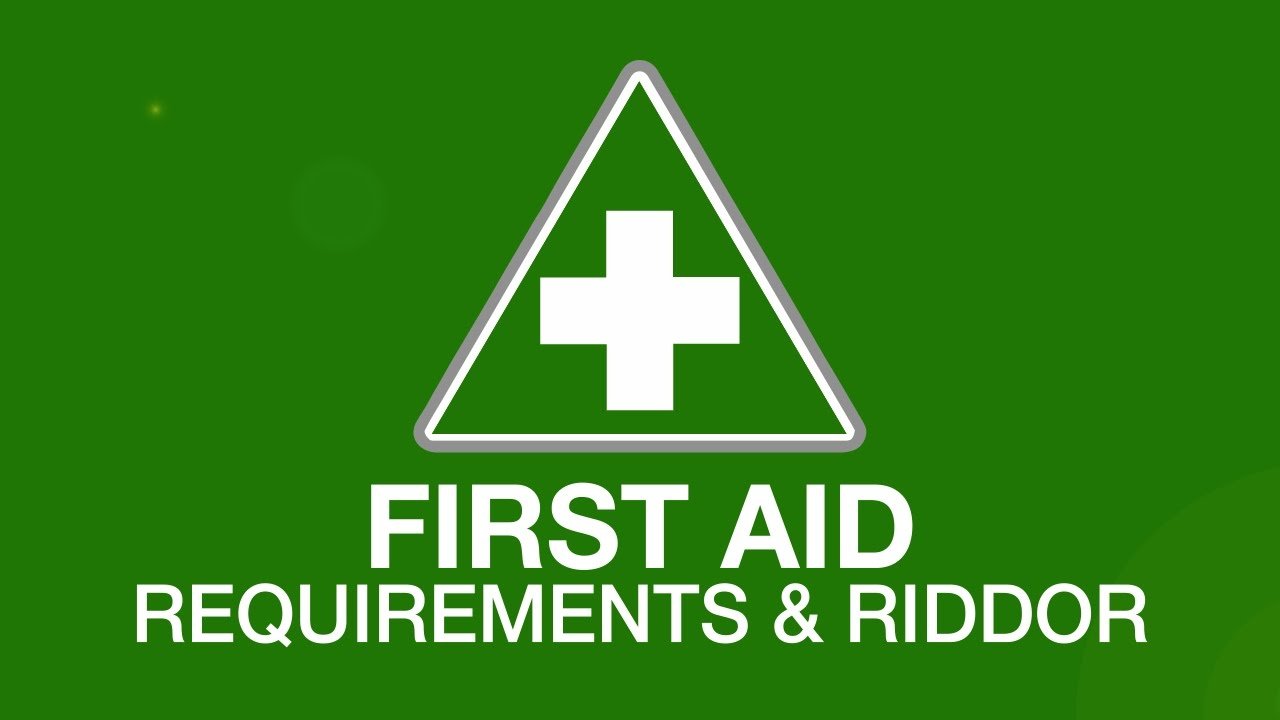
How to Become a Riddor Training Expert: A Step-by-Step Guide
Are you ready to enhance your career in health and safety? Becoming a RIDDOR (Reporting of Injuries, Diseases and Dangerous Occurrences Regulations) training expert can be your gateway to making workplaces safer and more compliant.
Imagine the satisfaction of knowing that you play a crucial role in preventing accidents and ensuring that organizations adhere to essential safety regulations. This guide is designed to equip you with all the knowledge and skills you need to excel in this vital field.
You’ll discover the steps to become a trusted RIDDOR training professional, opening doors to new opportunities and making a real difference. Dive into the article to uncover the secrets that could transform your career and boost your impact in the workplace.
Riddor Training Basics
RIDDOR Training Basics focus on teaching essential skills for workplace safety reporting. Gain knowledge of accident reporting procedures. Understand the importance of compliance with health and safety regulations.
Riddor Training Basics Navigating the world of workplace safety can feel daunting, but Riddor training simplifies this journey. It equips you with the knowledge to report and handle work-related incidents effectively. Whether you’re an employer or an employee, understanding these basics ensures you’re prepared for any situation that arises.
Understanding Riddor Regulations
Riddor stands for the Reporting of Injuries, Diseases, and Dangerous Occurrences Regulations. It’s a UK law that mandates the reporting of specific work-related incidents. Knowing what to report is crucial for maintaining workplace safety. Imagine a colleague slipping and injuring themselves. Would you know the next steps? Riddor training teaches you which incidents require reporting and how to document them accurately. Understanding these regulations not only keeps your workplace safe but also legally compliant. It’s about more than just following rules; it’s about creating a safe environment for everyone.
Importance Of Compliance
Why is compliance so critical? Non-compliance can lead to severe legal consequences and hefty fines. More importantly, it puts people at risk. Consider the impact on morale when safety is compromised. Colleagues may feel unsafe or undervalued. Riddor training emphasizes the role each person plays in fostering a safe workplace. When you adhere to compliance, you demonstrate commitment to your team’s well-being. This builds trust and encourages a culture where safety is prioritized. Wouldn’t you want to work in an environment where safety is a shared responsibility? Riddor training provides practical steps to ensure compliance. It makes regulations accessible and applicable to real-world scenarios. So, are you ready to make your workplace safer and more compliant?

Essential Skills For Trainers
Riddor training equips trainers with skills to report workplace accidents effectively. Understanding safety regulations is crucial for accurate incident documentation. Communication and attention to detail ensure compliance and enhance workplace safety.
Becoming a RIDDOR trainer is more than just understanding regulations; it’s about equipping others with the skills to handle workplace incidents efficiently. The right trainer can make a significant difference in how effectively safety protocols are followed. This section will explore the essential skills you need to excel in this role. Whether you’re transitioning into this role or looking to enhance your capabilities, honing these skills can be your stepping stone to success.
Communication Skills
Effective communication is the backbone of any training program. As a trainer, you must convey complex safety information clearly and concisely. Imagine you’re in a room full of diverse participants; how do you ensure everyone understands the importance of reporting incidents? Use simple language and examples that resonate with your audience. Encourage questions and foster a dialogue that invites active participation.
Problem-solving Abilities
Workplace incidents can be unpredictable. You need strong problem-solving skills to guide others in handling unexpected situations. Think of a time you had to quickly adapt a training session due to an unforeseen technical glitch. Your ability to think on your feet and provide solutions can inspire confidence in your trainees. Challenge yourself to develop scenarios that test problem-solving skills, preparing your audience for real-world challenges.
Attention To Detail
In training, overlooking small details can lead to significant oversights. Precision is crucial, especially when explaining legal requirements like RIDDOR. Reflect on a session where a minor detail made a substantial difference in understanding or compliance. Ensure your materials are accurate and up-to-date. Encourage trainees to pay attention to details by highlighting their importance in preventing workplace incidents. These skills are not just about improving your training sessions; they’re about empowering others. How can you refine these skills to ensure your training is impactful and memorable? Dive into each skill with commitment, and you’ll see the difference in your trainees’ confidence and competence.
Qualifications And Certifications
Understanding the qualifications and certifications for RIDDOR training is essential. It helps ensure safety in the workplace. These certifications validate your ability to report incidents correctly. They also demonstrate your understanding of health and safety regulations. Gaining these qualifications can open doors to various career paths. Let’s explore the required certifications and additional training opportunities.
Required Certifications
To become certified in RIDDOR training, certain qualifications are necessary. Health and safety certifications provide a solid foundation. A basic understanding of workplace safety is crucial. Certifications like NEBOSH or IOSH are widely recognized. They cover essential health and safety principles. These certifications are often prerequisites for RIDDOR training.
Formal education in health and safety is beneficial. It enhances your knowledge of regulations. Practical experience in reporting and documentation is also important. Employers value these skills. They ensure accurate incident reporting. Meeting these requirements prepares you for RIDDOR training.
Additional Training Opportunities
Once you’ve obtained the necessary certifications, further training can boost your skills. Advanced courses offer deeper insights into reporting procedures. They provide practical exercises and case studies. This training enhances your understanding of RIDDOR regulations.
Workshops and seminars can also be valuable. They offer hands-on experience and real-life scenarios. Networking with professionals in these settings is beneficial. It allows you to learn from their experiences. Continuous learning keeps you updated on new regulations. It also improves your reporting skills.

Developing Effective Training Programs
Learning how to become a RIDDOR trainer involves understanding reporting processes for workplace injuries. Effective training programs focus on safety regulations and proper reporting techniques. Engaging methods and clear instructions ensure trainees grasp essential concepts easily.
Developing effective training programs is essential to becoming a successful RIDDOR (Reporting of Injuries, Diseases and Dangerous Occurrences Regulations) trainer. These programs should not only cover the necessary regulations but also engage and motivate learners. A well-structured training program can make the difference between a participant who simply attends and one who actively applies their knowledge.
Creating Engaging Content
Crafting engaging content is the cornerstone of any effective training program. Start by breaking down complex information into bite-sized pieces. Use bullet points and tables to organize data clearly and make it easy to digest. Consider your audience’s needs and interests. What will keep them invested? Personal stories can illustrate points powerfully. Recall a time when clear RIDDOR reporting prevented a major incident. This not only highlights the importance of your training but also adds a human element.
Incorporating Real-world Scenarios
Real-world scenarios breathe life into your training. They allow participants to see the practical application of what they’re learning. Present them with common workplace incidents that require RIDDOR reporting. Encourage learners to think through these scenarios. Ask questions like, “How would you handle this situation?” or “What steps are necessary for accurate reporting?” This approach helps solidify understanding and builds confidence in applying skills.
Using Technology In Training
Technology can elevate your training programs to new heights. Consider using interactive online modules or virtual reality to simulate real-life situations. These tools can create immersive experiences that traditional methods can’t match. Utilize video conferencing for remote learners. This ensures everyone can access the training, regardless of location. Don’t shy away from using apps or platforms that facilitate quizzes and real-time feedback. They keep learners engaged and allow you to assess understanding instantly. By focusing on these strategies, you can design a RIDDOR training program that is both comprehensive and captivating. What changes will you make to ensure your training is effective and engaging?
Assessing Training Effectiveness
Assessing the effectiveness of RIDDOR training is crucial. It ensures employees understand and apply what they learn. This process involves gathering feedback, measuring outcomes, and making necessary improvements. A well-assessed training program leads to safer workplaces.
Feedback Collection Methods
Feedback is vital for evaluating training success. Surveys are a common method. They provide direct insights from participants. Open-ended questions encourage detailed responses. Focus groups allow for in-depth discussions. Participants share their thoughts and experiences. Interviews give personalized feedback. Trainers learn what works and what doesn’t.
Improving Training Outcomes
Improving outcomes involves analyzing feedback. Identify areas needing enhancement. Update training materials regularly. Ensure they reflect current regulations and practices. Use interactive methods. They engage participants better. Practical exercises are effective. They help apply theory to real-world situations.
Incorporate technology. Online platforms offer flexible learning. They cater to varied learning styles. Evaluate training sessions periodically. Monitor progress and adapt as necessary. Continuous improvement is key. It leads to effective and meaningful training.
Staying Updated With Riddor Changes
Staying informed about changes to Riddor regulations is crucial for anyone involved in safety training. These changes can impact how you report incidents and manage health and safety compliance. Being up-to-date ensures you deliver accurate information in your training sessions, and helps you avoid costly mistakes. Let’s delve into practical ways you can keep yourself updated.
Monitoring Regulatory Updates
Keeping track of Riddor updates is easier than you might think. Regularly check the Health and Safety Executive (HSE) website for the latest news. They post updates and changes to regulations as they happen. Consider subscribing to their newsletter for direct updates. Having this information directly in your inbox saves time and ensures you don’t miss anything important.
Another practical tip is setting up Google Alerts for Riddor-related news. This way, you receive notifications about any new articles or announcements. It’s a simple yet effective way to stay in the loop without actively searching for updates.
Networking With Industry Experts
Connecting with experts in your field is invaluable. Attend industry conferences and workshops to meet others who are passionate about safety training. These events are great places to discuss changes in regulations and share experiences. Networking can provide insights that you might not find online.
Join professional groups and forums dedicated to health and safety. Engage in discussions and ask questions. You’ll find that many people are willing to share their knowledge and experiences. What unique insights could you gain from someone who has been in the industry for decades?
Staying updated with Riddor changes isn’t just about compliance; it’s about enhancing your expertise and ensuring your training remains relevant. With these strategies, you can confidently navigate the ever-evolving landscape of health and safety regulations.
Building A Career As A Riddor Expert
Starting a career as a Riddor expert involves understanding workplace safety regulations. Gain knowledge through Riddor training courses. These courses cover incident reporting and compliance essentials. Practical experience and certifications enhance your expertise, making you a valued professional in health and safety management.
Building a career as a Riddor expert opens many paths in health and safety. It requires dedication to understanding regulations and reporting incidents. This field focuses on preventing workplace injuries and illnesses. Professionals in this area help ensure compliance and promote safe environments.
Finding Job Opportunities
Start by researching companies that prioritize health and safety. Many large firms have dedicated teams. Search job boards for openings in safety management. Networking is crucial. Attend industry events and connect with professionals. Social media platforms can be useful for job leads. LinkedIn is a great place to start.
Career Advancement Tips
Stay updated on latest regulations and trends. Regular training is essential. Certifications enhance your skills and credibility. Consider advanced courses in safety management. Seek mentors who can guide your career path. Experience in various industries can broaden your expertise. Set clear goals and work towards them consistently.
Joining Professional Organizations
Professional organizations offer valuable resources. They provide networking opportunities and access to industry news. Membership can increase your visibility in the field. Join groups like IOSH or NEBOSH. Participate in webinars and workshops. These organizations can aid in professional growth. Active involvement can lead to leadership roles.

Frequently Asked Questions
What Is Riddor Training?
RIDDOR training educates individuals on reporting workplace injuries and incidents. It covers the legal requirements under the Reporting of Injuries, Diseases and Dangerous Occurrences Regulations. The course ensures compliance and promotes a safer work environment by teaching how to identify, assess, and report incidents correctly.
Why Is Riddor Training Important?
RIDDOR training is crucial for workplace safety. It ensures that incidents are reported accurately and promptly. This helps in identifying hazards and preventing future accidents. Proper reporting also aids in compliance with legal obligations, minimizing potential liabilities for businesses.
Who Should Attend Riddor Training?
RIDDOR training is essential for health and safety officers, managers, and supervisors. It is also beneficial for anyone responsible for reporting workplace incidents. Training ensures these individuals understand their legal duties and how to effectively report and manage workplace hazards.
How Long Does Riddor Training Take?
RIDDOR training typically lasts one day. The course duration may vary depending on the provider. It usually includes interactive sessions, practical exercises, and assessments to ensure comprehensive understanding and application of reporting procedures.
Conclusion
Becoming RIDDOR trained boosts workplace safety and compliance. Start with understanding regulations thoroughly. Practice regularly to sharpen your skills. Stay updated with the latest safety guidelines. Seek advice from experienced trainers. Networking with peers helps share knowledge. Online resources offer valuable insights too.
Remember, safety is everyone’s responsibility. Proper training ensures you handle incidents effectively. This knowledge safeguards both you and your colleagues. Aim for continuous learning and improvement. Your dedication makes workplaces safer for all. Take small steps every day towards better safety practices.
You can make a difference.





